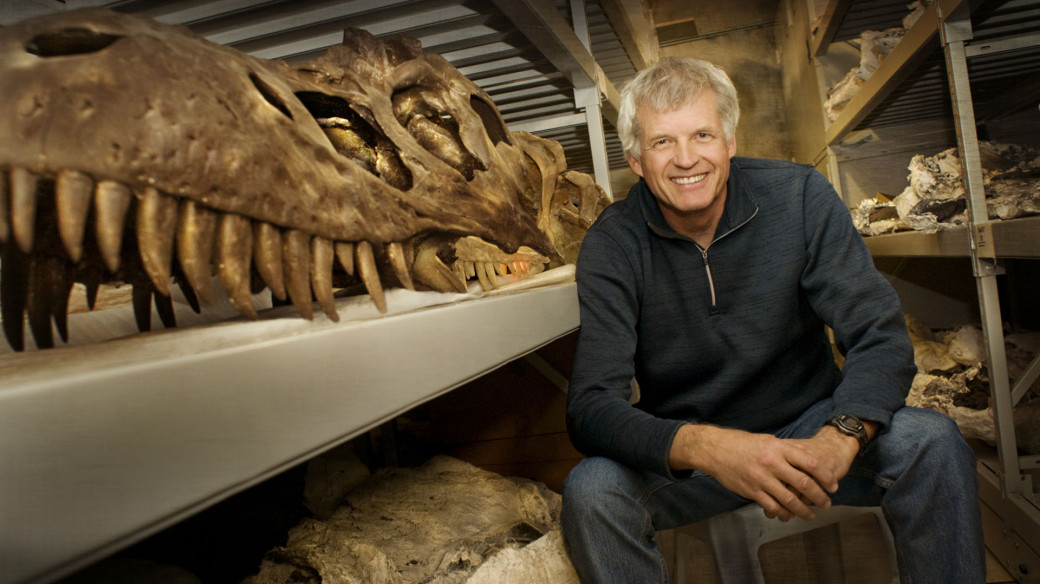Non-urgent government operations are closed December 24 to January 1, reopening January 2. View available services during this period.

"Expect to work hard, always have a game plan and don’t be afraid to pursue your passion."
Advice from Phil Currie to the next generation of scientists and to young Canadians in general
Philip Currie is an internationally renowned palaeontologist whose scientific accomplishments have led to a greater understanding of dinosaurs and their scientific significance. He has served as a seminal force in developing Alberta’s reputation as a centre of excellence in palaeontology and as an inspiring mentor for up-and-coming Canadian scientists.
Philip John Currie was born on March 13, 1949 in Brampton, Ontario to Robert and Esther Currie. Eldest son Philip was joined by three brothers, Stephen, Mark and Michael and the family eventually relocated to Oakville. Phil’s early years were marked by success in school, by a love of art encouraged by his mother’s work as a painter and by an ever deepening interest in the world of science. At the age of six Phil had his first introduction to palaeontology in the form of a toy dinosaur that spilled out of a box of breakfast cereal and into his bowl. In time it was supplemented by various books and comics featuring dinosaurs as well as a considerable collection of limestone rocks with outlines of ancient marine life which Phil had carefully selected from the shores of nearby Lake Ontario. The encouragement of a particularly supportive fifth grade teacher and the discovery of a book called “All About Dinosaurs” more or less cemented Phil’s belief that his future lay in palaeontology.
Phil attended the University of Toronto where he earned a Bachelor of Science degree in Zoology in 1972. The same year he married his first wife, Marlene, and the couple moved to Montreal where Phil began working on a Master of Science degree in Biology from McGill University. Phil balanced his studies with his role as a new dad to sons, Tarl and Devin, and his work as a lab assistant and geology technician at the Redpath Museum in Montreal. As he started his doctoral thesis at McGill, Phil wrestled with the realization that there were alarmingly few palaeontology-related positions to be had across Canada. A rare opportunity at the Provincial Museum of Alberta prompted Phil to apply even though he was convinced he would be unsuccessful without a PhD on his resume. However, the interviewers were fully convinced they saw something special in the young candidate and gave him the job.
In 1976, Phil moved his family to Edmonton and settled in as curator of palaeontology at what has since been renamed the Royal Alberta Museum. He held down the position while completing a PhD in absentia from McGill and also welcomed third son, Brett, to the family. His summers were spent combing the Alberta badlands for fossils. Within five years, Phil and his staff had retrieved so many specimens from Dinosaur Provincial Park that the collection threatened to overwhelm the museum. It was becoming increasingly clear that Alberta’s rising prominence as a paleontological centre warranted a new provincial institution dedicated to the field.
In 1981, the newly-minted Dr. Currie became vice chair of a planning committee for a new Alberta institute that would eventually become the world-class Royal Tyrrell Museum of Palaeontology. The museum, located just outside Drumheller, opened to the public in 1985 with Dr. Currie serving as assistant director of collections and research and, later, as head of the dinosaur research program. Phil split his time between the museum, service as an adjunct full professor at the University of Calgary and the ongoing search for fossils. His pursuit of new information eventually expanded to rich sites in north western Alberta and to digs in China, Antarctica, Mongolia, Argentina and Australia. He has also travelled extensively to serve in a curatorial and advisory capacity for numerous Canadian and American institutions. In 1993, Phil’s first marriage had come to an end but a new chapter began when he met fellow scientist and noted palaeobotanist Eva Koppelhus. The couple were married in 1998.
In 2005, Phil scaled back his duties at the Tyrrell to take on new challenges as the Canada Research Chair in Biological Sciences at the University of Alberta. His work at the school has included mentoring the next generation of Canadian palaeontologists, producing cutting edge work on dinosaurian biomechanics and building the school’s reputation as a highly regarded research lab and fossil collection facility.
Phil Currie’s contributions to science, education and public awareness in the field of palaeontology over the years are remarkable. He has played a lead role in protecting and promoting Alberta’s rich bounty of dinosaur fossil material. At the same time, his field research and pioneering lab techniques have shed new light into the origins of birds and served to reconstruct much of what we know about the evolution of meat eating dinosaurs, from anatomy, diversity and environment to herd behaviour and migration patterns. Those observations on ancient Earth biology have impacted the scientific world’s understanding of the planet’s past and, in turn, offered new and broader perspectives on potential evolutionary and environmental developments to come.
Together with his colleagues Phil has named 25 new dinosaurs (and other fossil reptiles) and three have been named in his honour. His name has appeared on approximately 100 scientific publications in a variety of world class journals, 26 book chapters, 20 books that he authored or co-authored and some 120 non-technical publications for audiences of all ages and levels of expertise. Many of those works have been translated into other languages. He also is easily one of Canada’s most referenced scientists in the news media who has made more than 1,000 appearances in newspapers, radio and TV in his efforts to increase awareness of and interest in palaeontology.
Dr. Currie’s work has been recognized with numerous honours. He received the ASTech Foundation’s Outstanding Leadership in Alberta Science Award, the Canadian Museums Association Award for Distinguished Service and the Michael Smith Award for Science Promotion from the Natural Sciences and Engineering Research Council of Canada. He is a Fellow of both the Royal Canadian Geographic Society and the Royal Society of Canada and holds the Alberta Centennial Medal and the 125 Anniversary Medal. In 2003 Phil Currie was named one of Canada’s best explorers by Time Magazine and was included in the Calgary Herald’s 1999 list of Alberta’s Heroic 100 of the Millennium. He received an Honourary Doctorate of Laws from the University of Calgary in 2008.
Phil Currie often attributes his record of success to date to hard work and luck, but there is clearly much more at play. His tremendous energy and passion, combined with his great insights, integrity and leadership have made him a long standing and respected pioneer in the scientific community. At the same time, the optimism and enthusiasm for the joy of discovery that inspired him to begin exploring so many years ago continue to make him an ideal ambassador for people across Alberta, throughout Canada and around the globe who want to learn about the value of science and everything it has to tell us about the past and future of the world in which we live.
